Thoughts on Comic Book History
A Series of Research-with-Recollections Comic Book Posts for Your Consideration
POSTS IN THE SERIES: Post 1 Post 2 Post 3 Post 4 Post 5 Post 6
Note 1: I am currently working on one or more posts discussing the American comics codes and their effects on publishing, as well as the furor(s) that surrounded them. Life has once again intruded these last few weeks, but with luck, sometime next week you should see the first one posted. In the meantime, I am reposting a series of six articles that I wrote about two and one-half years ago on American comic book history. I might make a few corrections along the way. We’ll see.
Note 2: I do not strive to be either academically rigorous nor authoritative in my analysis, and I’m an opinionated cuss. Other authors have spent a great deal of time interviewing the principle actors and performing rigorous historical research, therefore I lean heavily on those individuals who did the heavy lifting on this topic. My posts are meant to review some results of these researchers’ data and findings, as well as examining other artifacts of comic book history, to attempt to find general or overarching patterns that may inform and guide current and future creators of comics. References to the sources I use will be provided at the bottom of this and future blog posts.
Note 3: Some of these posts are gonna blow up your e-mail. Sorry ‘bout that.
WHAT IS A “COMIC BOOK”?
What are comic books, or at least, what are American comic books? In the parlance of the day of the mid- to late-1930s, a comic book was a book that contained comic strip reprints, typically the Sunday funnies of popular strips if reprint rights were available, short stories of adventure and humor, and some comic stories that were written and drawn by in-house staffers.
This was obviously crafted by DC Comics just before Action Comics #1 was published, right?
Yeah, no.
This was an evolution from many cultural art forms, internal to the young United States and to the older European nations that settled the country. Political cartoons, the “Penny Dreadfuls”, Britain’s The Strand Magazine, early French Bande Dessinée (BD), humor magazines, magazines for boys and for girls, and various other magazines of interest that were popular from the 1870s up to the 1900s influenced this development.
Magazines with stories and illustrations featuring tales of adventure and romance became popular in the early 20th Century and spawned a flurry of cheap magazines. As was the case in the late 19th Century, these periodical were printed on newsprint paper, often referred to as ‘pulp’ paper. Many of these magazines came to be known to us as “Pulp Magazines” through that type of paper. Novel, eh? Yes, I speak Canadian.
“…A CONTINUATION OF THE PEP AND SNAP WE GOT IN THE ARMY.”
One of these magazines was, in my view, a direct precursor to the comic book format we see in Action Comics #1, dated June 1938, meaning it was made available about April of 1938. That magazine was called Captain Billy’s Whiz Bang, published from October 1919 to May 1936 by Fawcett Publications in Robbinsdale (later Robinsdale), Minnesota, owned by William “Captain Billy” Fawcett. The “whiz bang” was slang for incoming artillery shells in the Spanish American War when Fawcett served.
Featuring often off-color jokes, cartoons, and humorous short stories, the magazine became a hit with many and declared immoral by even more. While primarily textual in content, the magazine promised fun, escapist distractions. It was read by all ages, and it was slightly “off limits”, but it was entertaining — and it was wildly successful!
Its circulation rose from 2000 first issue copies to 350,000 copies a month in 1921, and 425,000 monthly copies in 1923 with $500,000 in annual profits that year (by the way, that’s $9.2 million in 2024 dollars).
Fawcett leveraged his success with his humor magazine to create other magazines, to include True Confessions (1922) and Modern Mechanics and Inventions (1928), which was later renamed Mechanix Illustrated.
The Great Depression, with its somber tone and greatly reduced personal incomes, didn’t mix with the ribald humor of Captain Billy’s Whiz Bang. Thus, the magazine shuttered in May 1936, just two years before Action Comics #1 hit the newsstands.
Regardless of this loss, Fawcett Publications became a magazine empire with titles including Battle Stories, Cavalier, Daring Detective, Dynamic Detective, Family Circle, Motion Picture, Movie Story, Rudder (later merged with Sea), Screen Secrets, Secrets, Triple-X Western, True, and Woman’s Day.
William Fawcett died in 1940, but his sons carried on his business and launched Fawcett Comics that same year. Captain Marvel Adventures overtook Superman sales in the mid-1940s, leading to a LOT of heartburn at National Periodicals (which would come to be known in 1977 as DC Comics).
WHO’S ON FIRST?
But, let’s move back to National Periodicals for a bit. Detective Comics #1 debuted in January of 1937 (March 1937 issue) with a mix of action and adventure tales in various locales around the world. It wouldn’t be until Issue 27 (May 1939) that Batman would debut, just over a year after Superman in Action Comics #1. The same month as Detective Comics #27 was distributed, Superman #1 hit the stands. Batman #1 followed in March 1940. Thus, the first costumed superheroes are born!
Well, again, no.
The first costumed adventurer in comics was Lee Falk’s The Phantom (in February 1936). Not to be outdone by the 21st Century, the first female comic creator was Tarpe Mills’ with her creation, Miss Fury, which debuted in 1941.
Ah, but Superman was the first costumed hero in comics, since that Phantom guy was in the comic strips!
BZZZT! I’m sorry, but Mr Trebek says you’ve lost control of the board.
The Phantom was popular enough that he appeared in comics as well. Namely, King Features Syndicate’s Ace Comics #11, February 1938 — four months before Superman debuted. ‘The Ghost Who Walks’ wins again!
Sorry, Supes. Must have been some green kryptonite hanging around those newsstands.
What about the stories? Where did they originate? Like any good writers, the comic authors typically went to the literature of the times as well as the recent past and stole whatever they could. Meaning — pulp magazines, novels, movies, fairy tales and folk tales, Western literature, religion, and et cetera. You also couldn’t count the number of big publishers on just one hand as today in the 21st Century. Take a look at this list. As you can see, comic books were significantly more than just “Marvel & DC” in the Golden Age of Comics.
“The Golden Age of Comics”. You hear that bandied about, but what does it mean? To answer that, let’s take a look at the Bible, shall we?
THE AGES OF COMIC BOOKS
The ages of comic books are similar to the dream of King Nebuchadnezzar, which was interpreted by the prophet Daniel (see Daniel, Chapter 2, in your Bible edition of choice). The King dreamed of a giant statue with a head of gold, chest and arms of silver, abdomen and upper thighs of brass (or bronze), legs of iron, and feet and toes made up of a mixture of iron and loose clay. Daniel interpreted those sections to be the various kingdoms of the world through time. Gold being the one that Nebuchadnezzar ruled, then successive kingdoms that would follow his, each generally lesser as one moved downward on the statue (through time).
Those successive sections of Nebuchadnezzar’s statue, oddly enough, also describe what is often referred to as the Ages of Comic Books. There is some discussion about how many ages there are, and where the break points occur–especially after 1985, and those details are not well defined by various people discussing the Ages. My breaks may or may not match with other people, but I will offer my thoughts on the Ages here, and that subsequent discussion and debate will be for another time and another post.
One age is occasionally added to represent the period before what we commonly regard as the beginning of the Golden Age of Comics. That is sometimes referred to as the Pre-Golden Age or the Platinum Age. This is the age of Pulp Magazines in their heyday, when what might be termed a comic book was almost exclusively comic strip reprints, humorous stories, and in-house humor comics.
Without further ado, the Ages of Comic Books.
THE TARNISH ON THE TROPHY
I’ll come back to the heyday of Marvel (1961-1968) and its first sale to a corporate raider in 1968 in a later post. Yes, you read that correctly — 1968, not 1986. The buyout in 1986 was the second sale. Again, more on that another time.
I want to say a few words about how the Silver Age ended. Since Marvel was the big dog in superhero comics at the time, most historians look to them for the end point in the Silver Age, just as DC is considered the initiator of the Age in 1956-1958 with the new Flash, though Barry Allen’s version was preceded by J’onn J’onzz, the Martian Manhunter (1955), and Captain Comet (1951).
Some comic historians end the Silver Age with Spider-Man Issue 121 and the death of Gwen Stacy.
No. That makes zero sense to me. Why?
Because Stan Lee had already been out of the comic book creation loop since The Mighty Thor 192 (Sep 1971) and Fantastic Four Issue 125 (August 1972)–his final issue–almost a full year before the Gwen Stacy moron-level screwup–er, death scene. No, I have no opinions on this, as you will discover later.
None.
Lee moved from Editor-in-Chief to Publisher in 1972. By the time Stan moved into an Executive Editor position in charge of IP management and sales in 1978, most all the key creative players who made Marvel a success had moved on from Marvel superhero titles, or from Marvel itself.
Steve Ditko left in 1966, leaving Dr Strange rudderless, while Spider-Man was re-vectored under Lee and Romita into a Mafia-fighting crusader who occasionally did fight a super-villain. After his departure, Ditko worked with Charlton Comics as he had in the early 60s, drawing his creations of Captain Atom and the Question, re-working the venerable Blue Beetle, and establishing his other independent comic book titles, such as Mister A.
Jack Kirby left in 1970 after finishing art on Thor 179, Fantastic Four 102, and Amazing Adventures 4 (The Inhumans) to bring his Fourth World creations to DC from 1970 to 1973. He had stopped innovating for Marvel years earlier, about the time of the company’s sale in 1968, due to disagreements over credit and compensation. Fantastic Four Issue 68 is often identified as Kirby’s last active contribution to plotting the series.
Don Heck was doing pick-up art on titles for Marvel, as more of a contract freelancer than a Bullpen member since Steranko had taken over on Nick Fury, Agent of S.H.I.E.L.D. in Strange Tales. The co-creator of Iron Man and anchor point artist for The Avengers would sporadically work for future Marvel superhero titles.
Jim Steranko was thwarted in projects he proposed after the 1968 sale of Marvel Comics, and he left the company to focus on commercial art projects, illustrations for books and movies, and other independent comic art.
John Buscema and Gene Colan never liked superheroes and moved to sword & sorcery, science fiction, mystery, adventure, romance, and horror titles, along with Roy Thomas in the 70s.
That pretty much cleared out the first stringers of the 1960s Marvel Bullpen by 1972. Therefore, Stan’s departure from an active role in comic book creation, as of Spider-Man 110 (not 121) and Fantastic Four 125, is the end of the Silver Age of Comics in my book — 1972.
Want to argue that the end of the Silver Age is really at the end of the Kree-Skrull War storyline? I won’t fight you on that one, for several reasons, but that is for a later post.
WHO WAS DOING WHAT AND WHEN AND TO WHOM?
Let’s also compare this timeline of the Ages with Brian Niemeier’s “Lost Generations” timeline for cultural generations. See details at this link: Brian Niemeier’s ‘Lost Generations’.
Now, let’s assume that kids start reading comics at 10 years old, start creating their own comics at 20 years old, and stop creating 40 years after starting such work. Using these rough estimates and rolling this information out against Ages of Comic Books, we find the following:
Peak Marvel Comics occurred about 1966/67, almost in the middle of the Silver Age. Boomers and early Jones got to experience it, while the Greatest and the Silents created it.
Later Jones and Gen-X started reading as the crash of 1973/74 wiped out a lot of comics Silents and Boomers were making, and in 1978 ushered in the Direct Market distribution model to compete with the original newsstand model.
Gen-Y began their comics experience with the deconstructionist Dark Knight and Watchmen. Death of Superman, anyone?
Mils and Zoomers were left with nothing but the post-1997 dregs of Recycle-Reuse-Redundant to begin their comic book experience, if they even had one.
WHERE DID YOU COME UP WITH THAT IDEA?
Throw another twist into this scenario: where did the Golden Age creators get their ideas for characters and stories? As we mentioned before, from the Pulps, the Western canon of literature, historical and cultural tales, fantasy works, and similar stories. These sources were commonly available through book stores, libraries, and book collections in homes, as well as being passed down via word of mouth through families.
The Pulp Magazines that fed the Golden Age were mainly hounded out of business by 1949/50 by whisper campaigns that claimed the magazines were childish and didn’t represent or print more literary works. The large book publishers that often repeated this disparagement of the Pulps were also quick to rifle the pockets of the dead for their paperback anthologies. This did allow people unfamiliar with the Pulps to at least get a taste of many of the stories and series that flourished in those publications.
Due to excess printing by publishers, back catalog warehouses often stocked “new old stock” in books, i.e. books printed years before, but never distributed. This allowed retailers to request back catalog items via queries sent to warehouses and their distributors. Periodic catalogs of inventories, large as an old phone book, would be made available to retailers. Since pulp stories were often reprinted in paperback anthologies, they were common enough that Gary Gygax chose to make a list of books that influenced him in creating Dungeons & Dragons, and recommended gamers get them and read them. (See Advanced Dungeons & Dragons, 1st Edition, Dungeon Masters Guide, Appendix N.)
The ready availability of these Appendix N materials was impacted by a court decision in 1979/80 involving the Thor Power Company that changed how many companies could claim inventories on their taxes. For books, the large warehouses of back catalog paperbacks and other books that were a ready source of older titles were now more a liability than an asset.
After 1980, the availability of the books that Gygax recommended, and that of similar pulp-derived materials, was much reduced. New and newer books began to fill book stores, without as many reprints peppering the shelves. Well-known authors of the previous several decades fell out of favor and became virtual unknowns with younger readers who never had a chance to hear of these creators.
For comics, this meant that mainly new fiction informed creators, rather than a much richer selection of entertainment from the past that was available prior to 1980. Creators would soon be ‘running on empty’ for story material, thus harvesting from the older comics themselves, not the literature on which they were once based.
That’s it for this installment. Let me know what you think. Don’t be shy about correcting my factual errors. My opinions? That’s another story.
BACKGROUND READING (and Some References)
APPENDIX N: The Literary History of Dungeons & Dragons; Link
“The Grand Comics Database”, comics.org; Link
“Captain Billy’s Whiz Bang”, MNOpedia.org; Link
“The Phantom”, Infogalactic.com; Link
“Ace Comics #11”. Everything2.com; Link
“Thor Power Tool Co. v. Commissioner”, Infogalactic.com; Link
“Thor Power Tool v. Commissioner, 439 U.S. 522 (1979)”, Supreme.Justia.com; Link
“The Effect of the Thor Ruling on School Librarian’s Ability to Obtain Copies of Children’s Literature and Reference Materials in Atlanta Public Schools.” eric.ed.gov; Link
“The Effects of the Thor Power Tool Decision on the LIFO/FIFO Choice”, JSTOR.org; Link
“A Comment on ‘The Effects of the Thor Power Tool Decision on the LIFO/FIFO Choice'”, JSTOR.org; Link

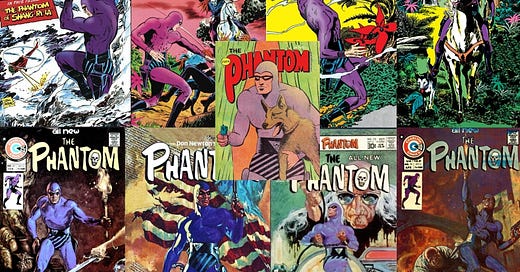

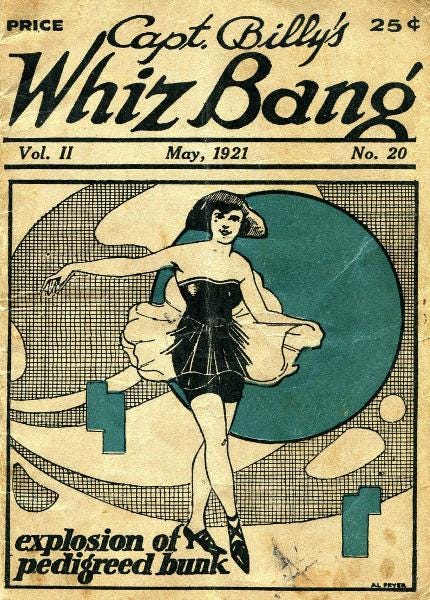
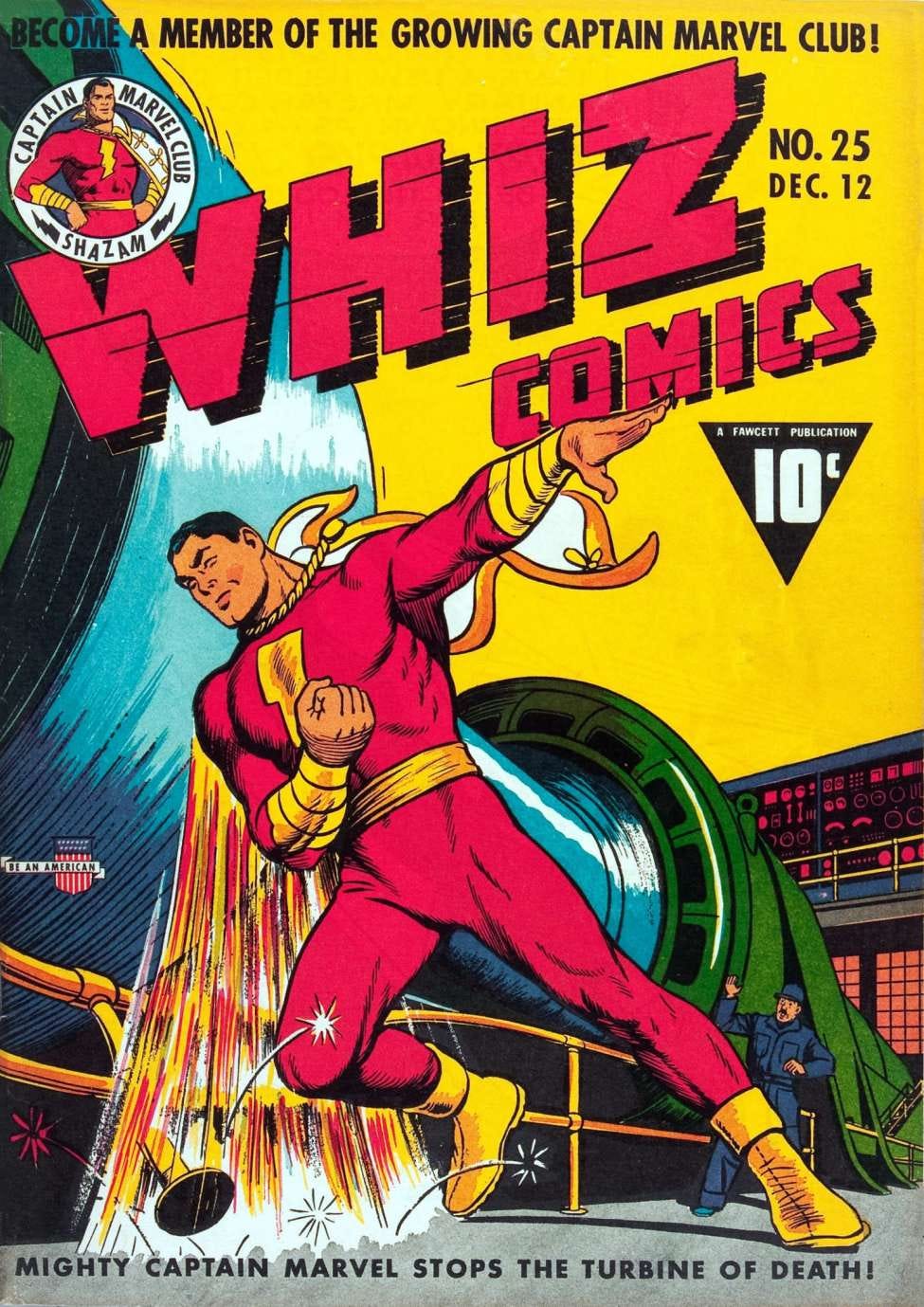
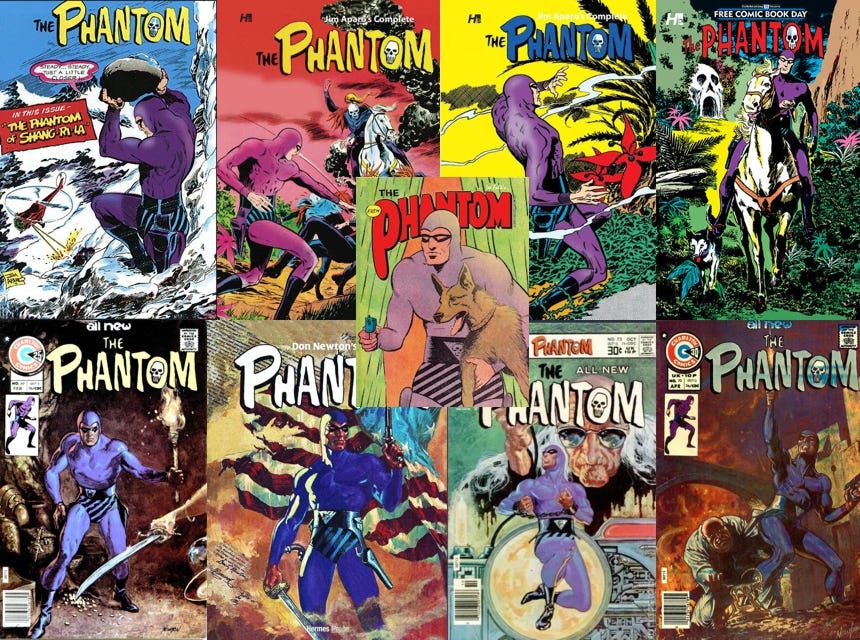
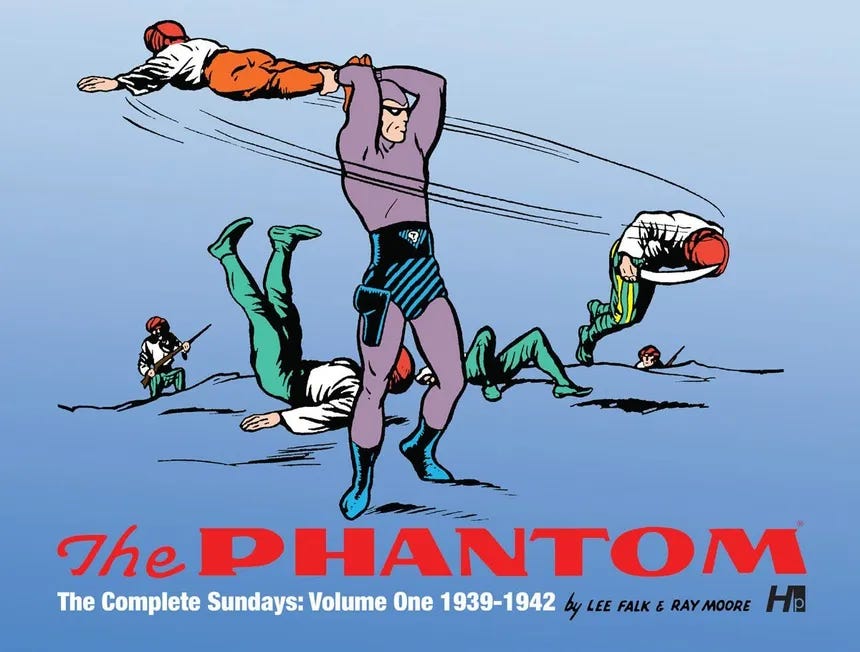

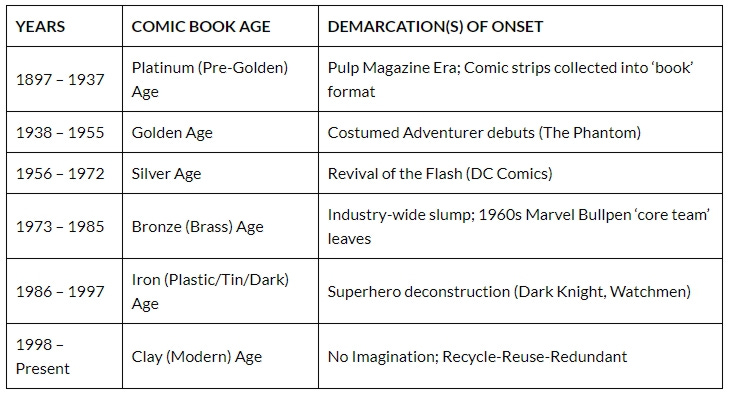

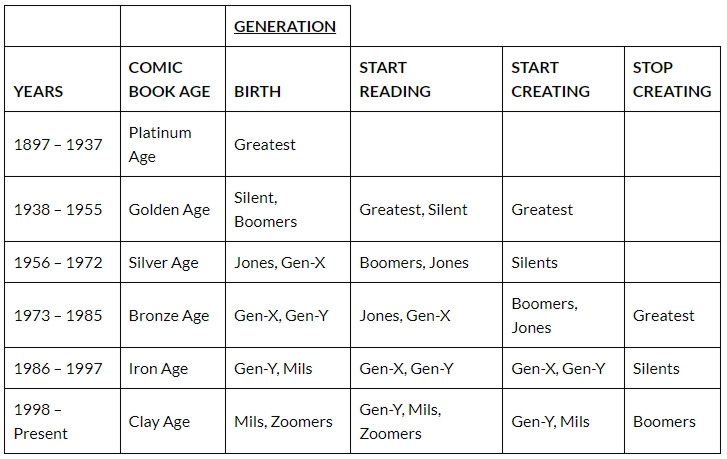
Comments now open on posts.
Great deep dive into comic nerdtopia. Puts perspective on inside baseball fragments I've picked up here-and-there.
I never read the original death of Gwen Stacy continuity, but I did read part of the clone continuity--which included a Gwen Stacy clone.